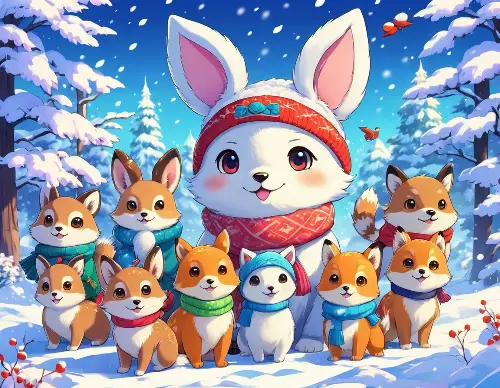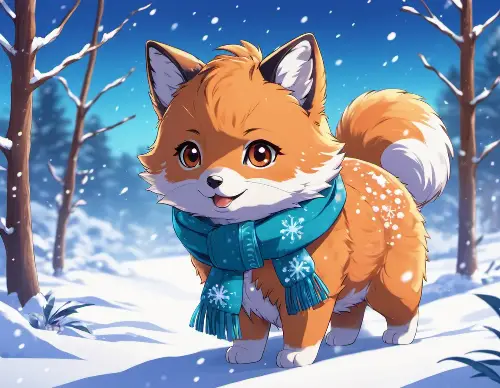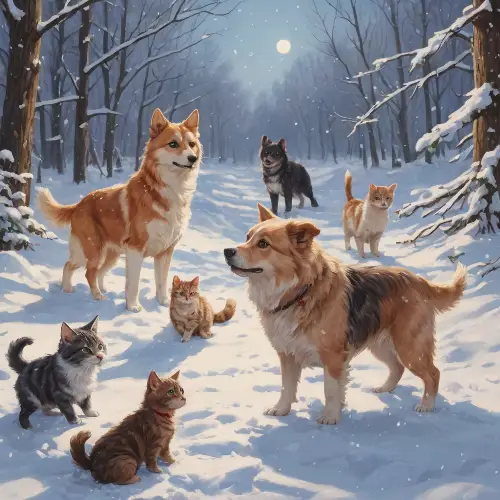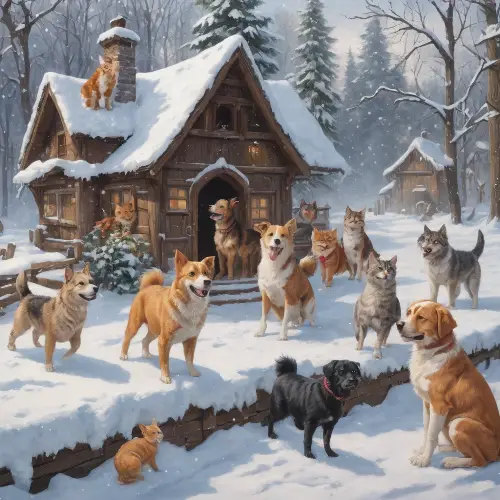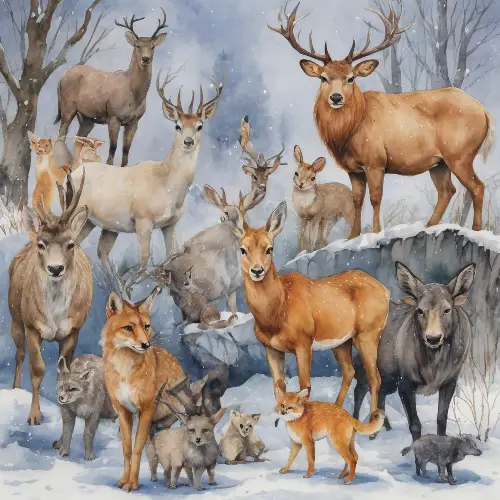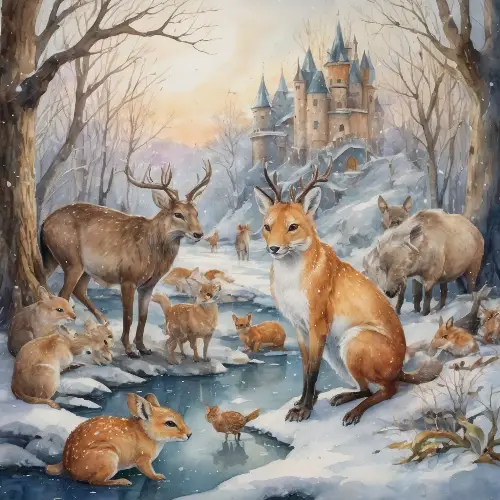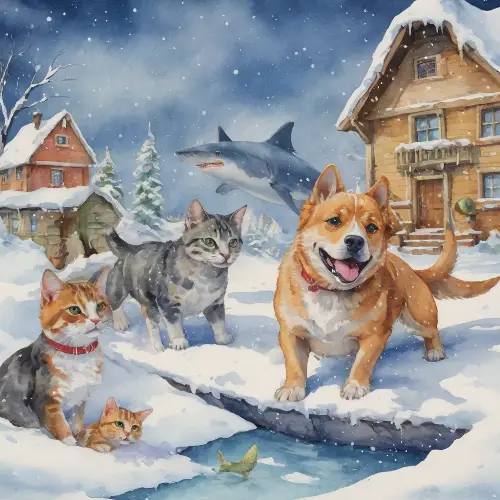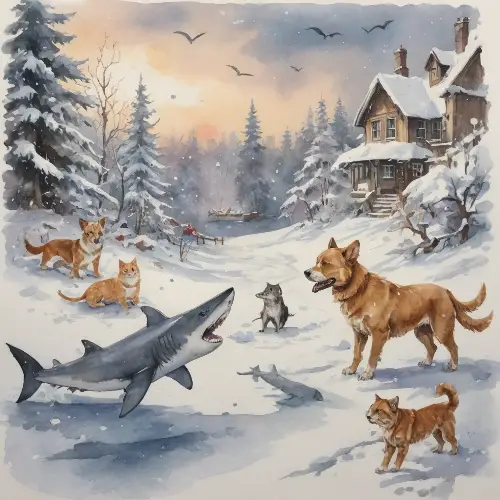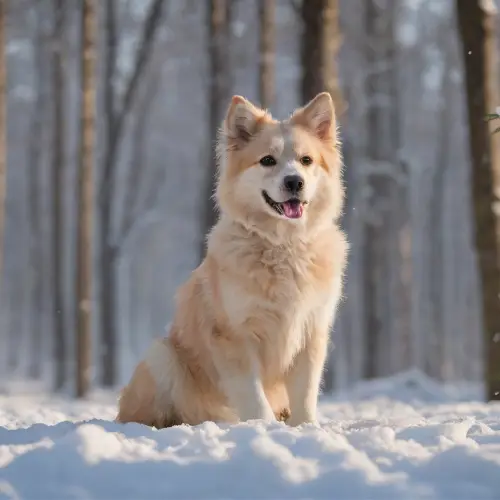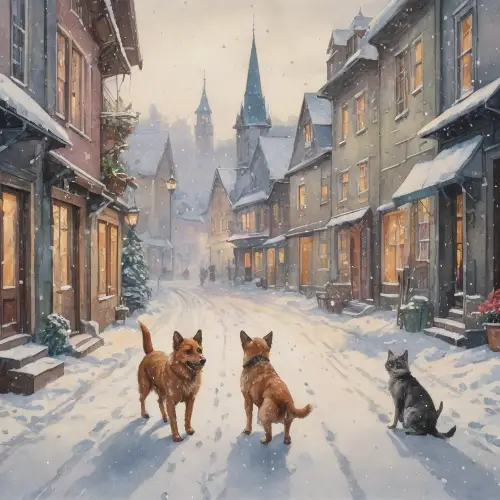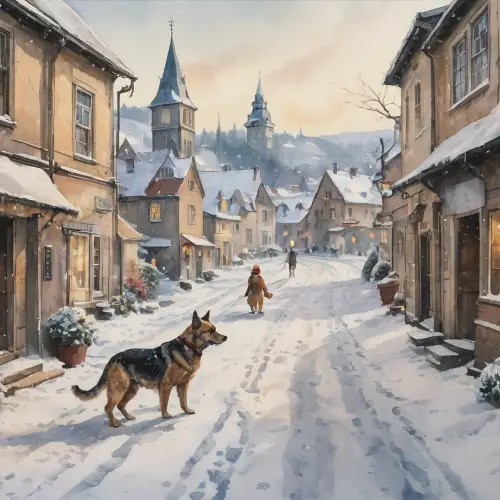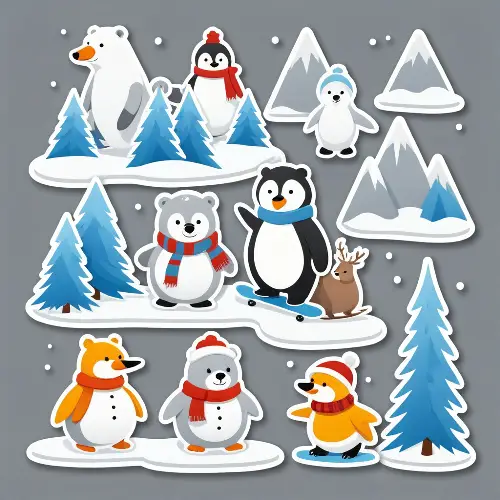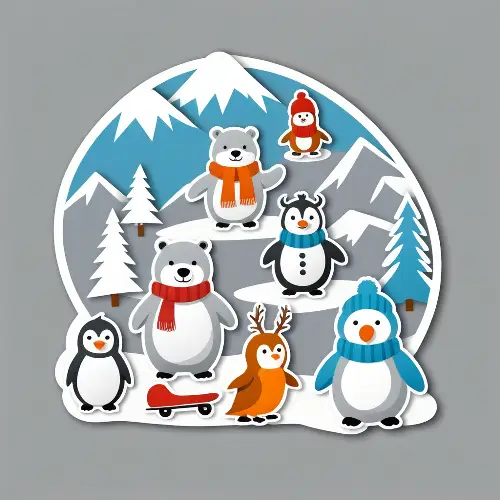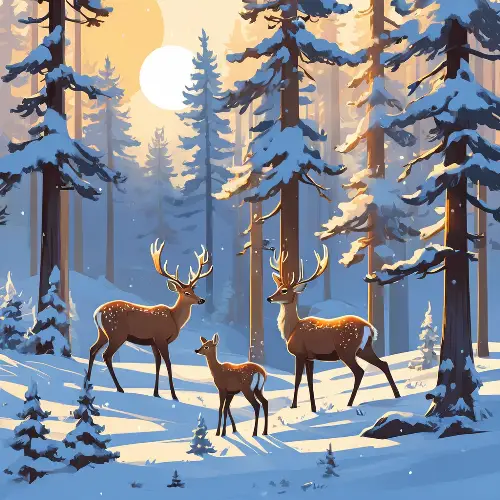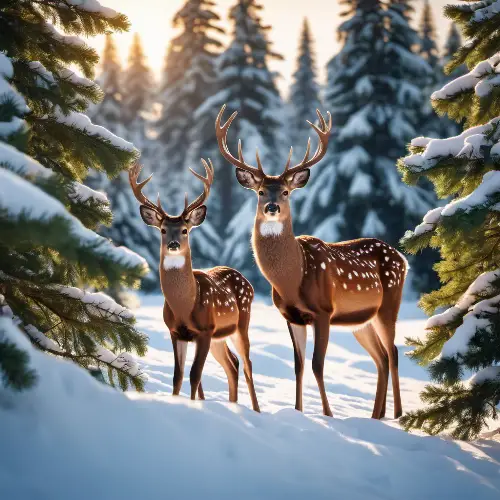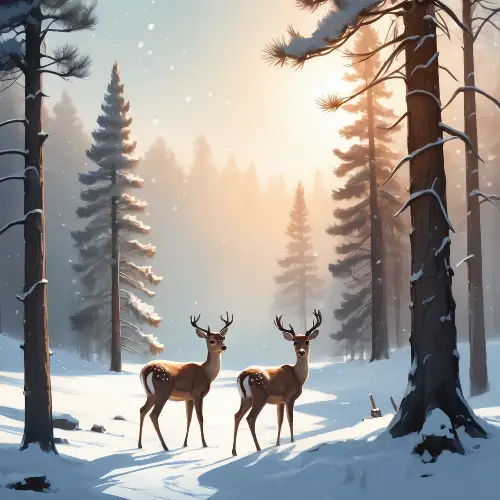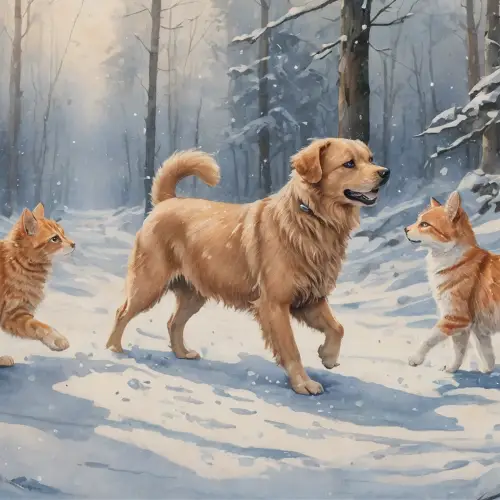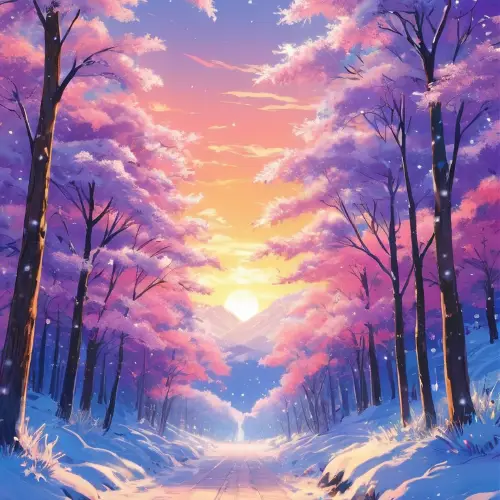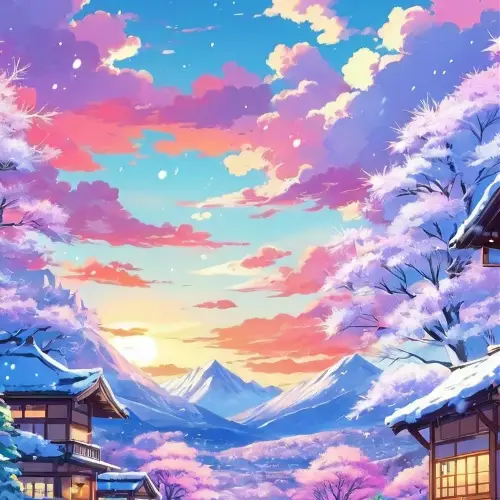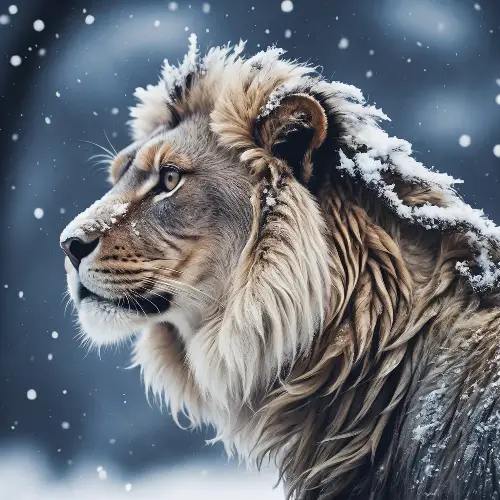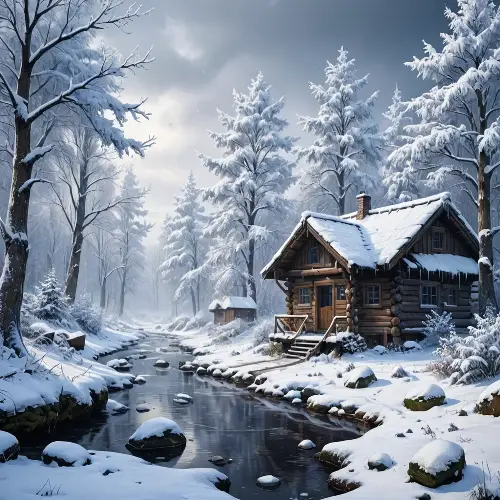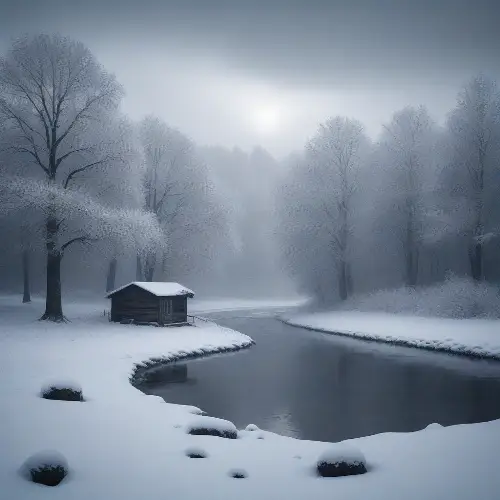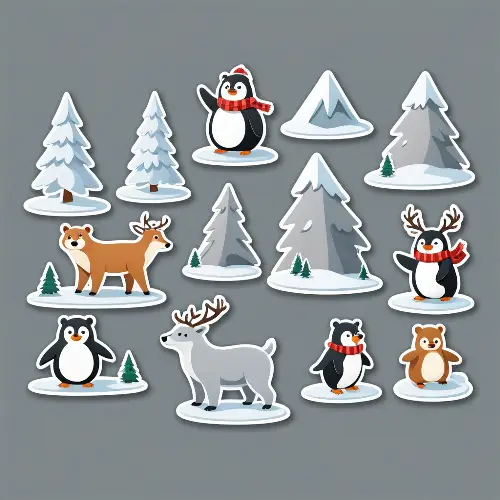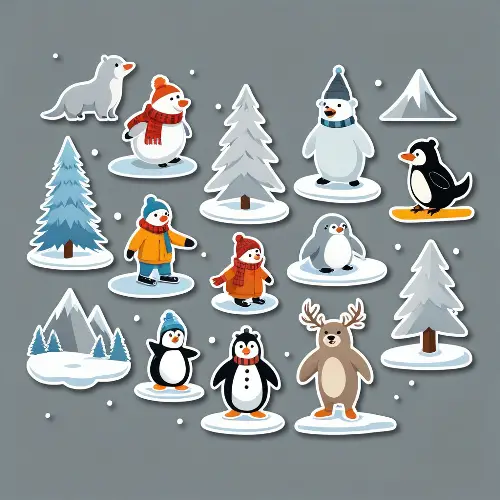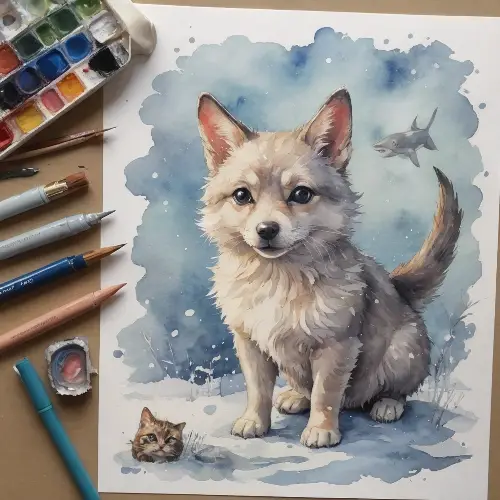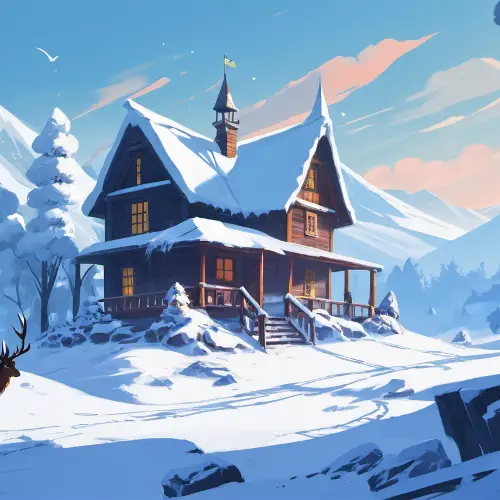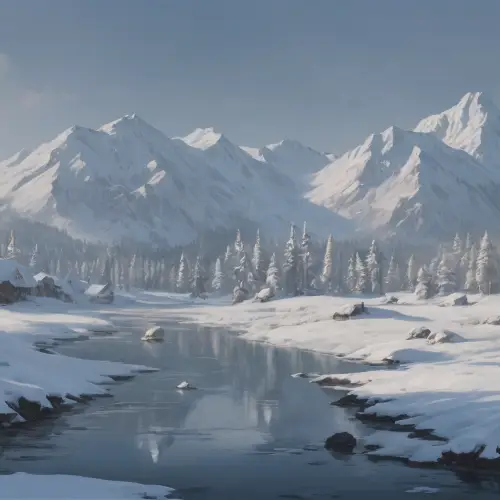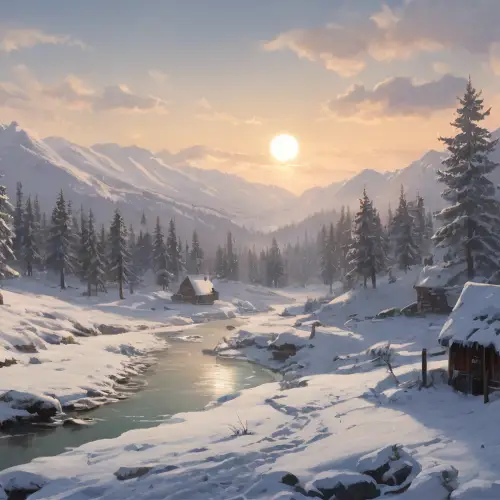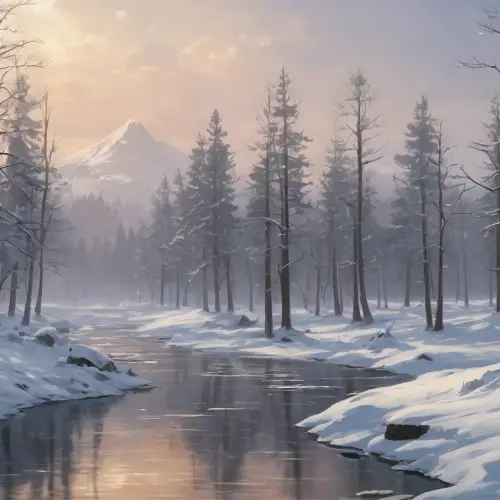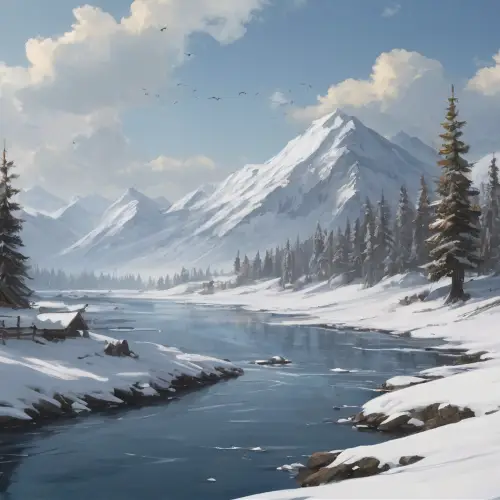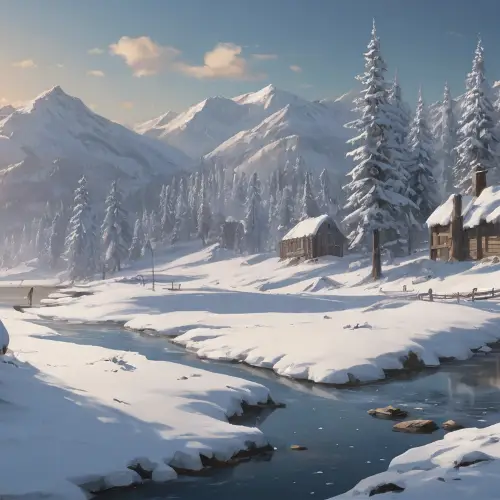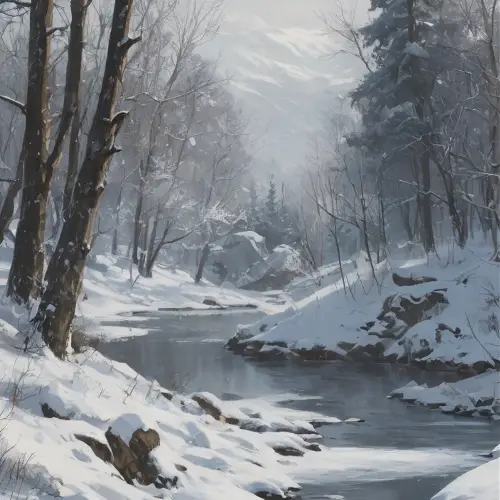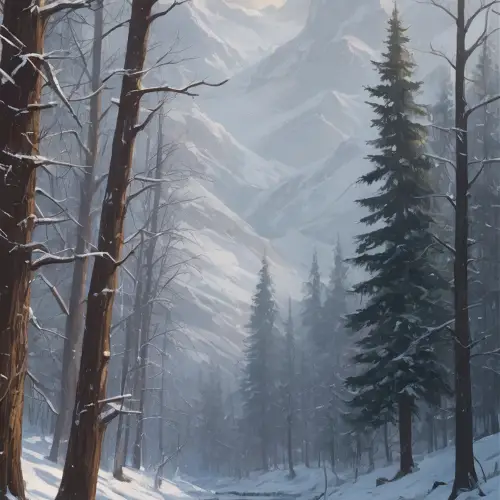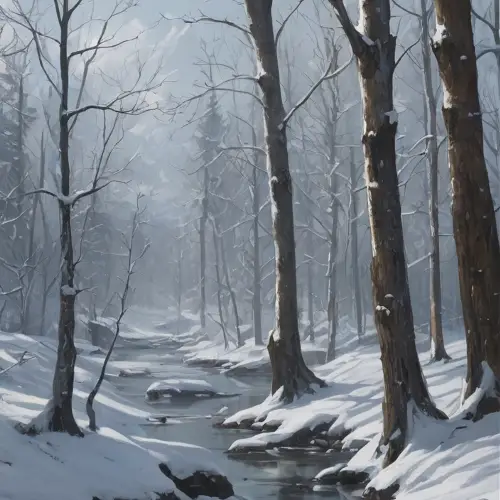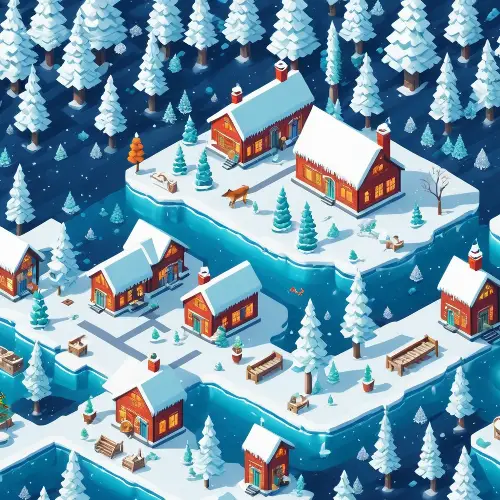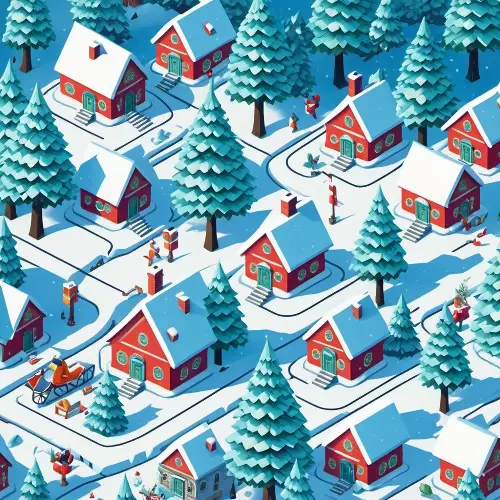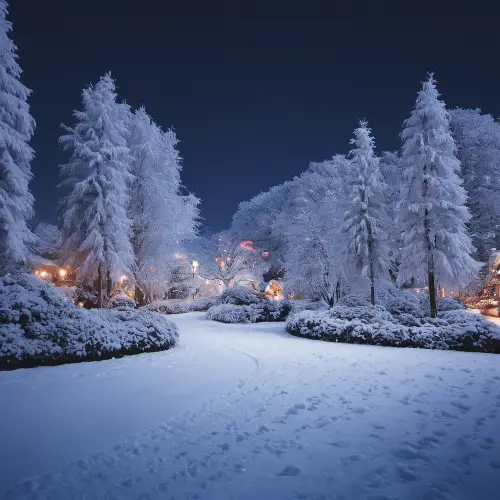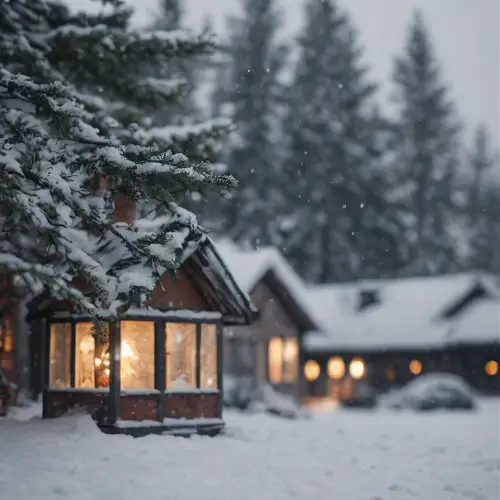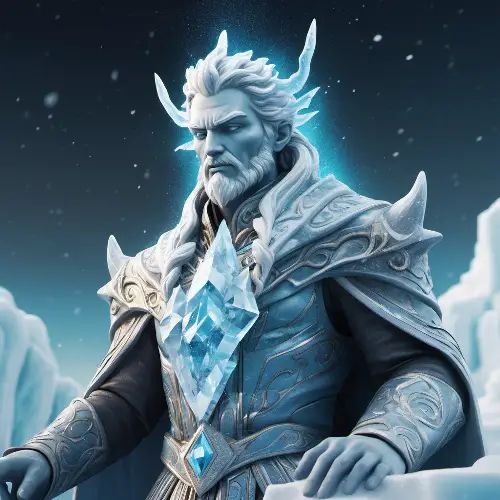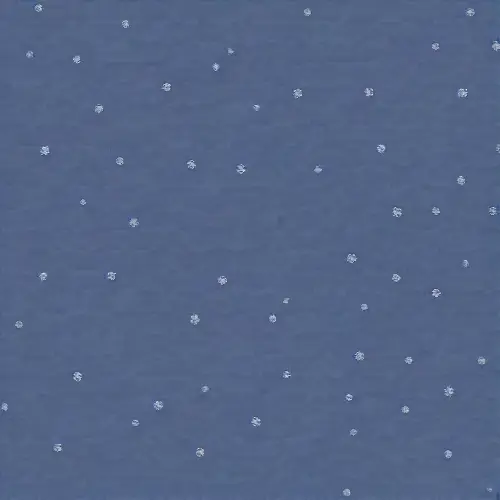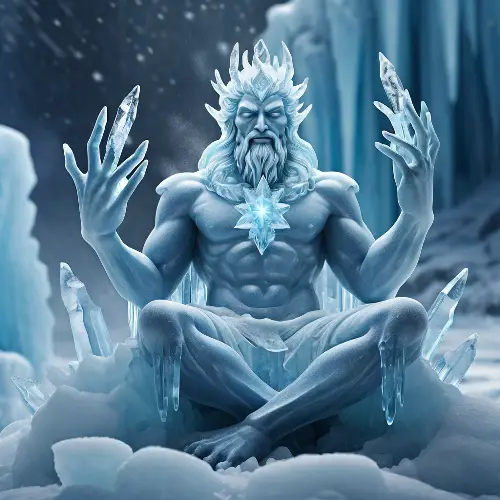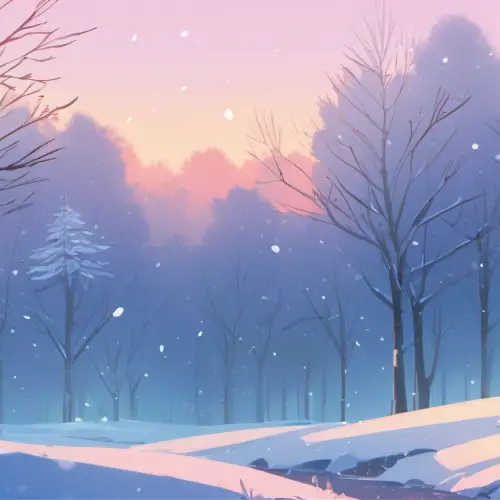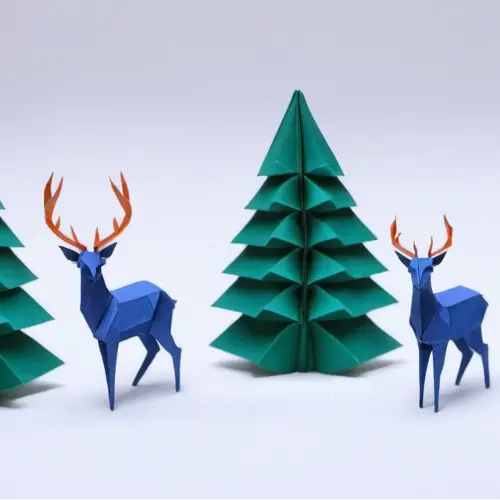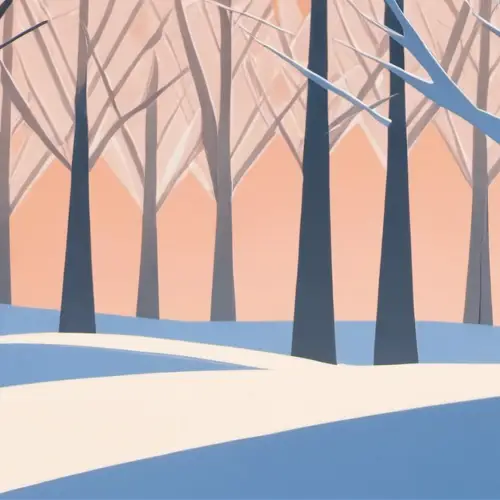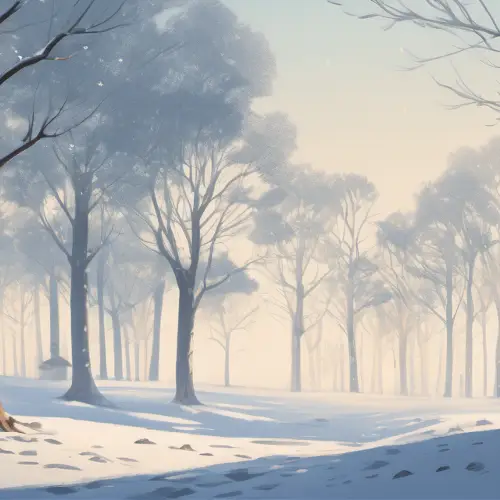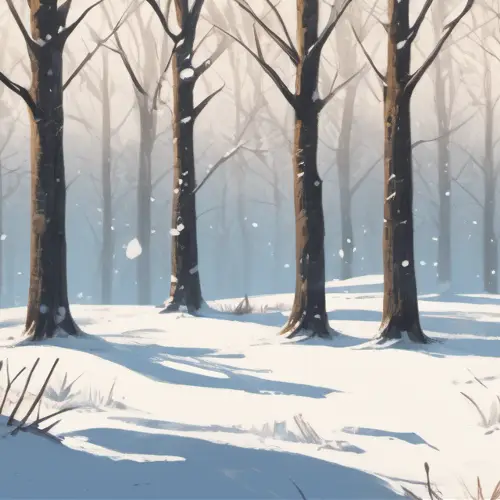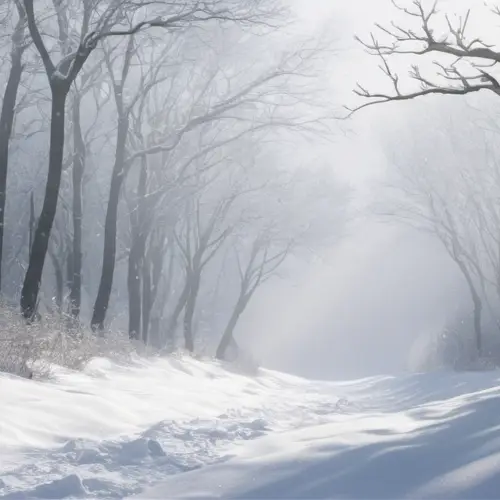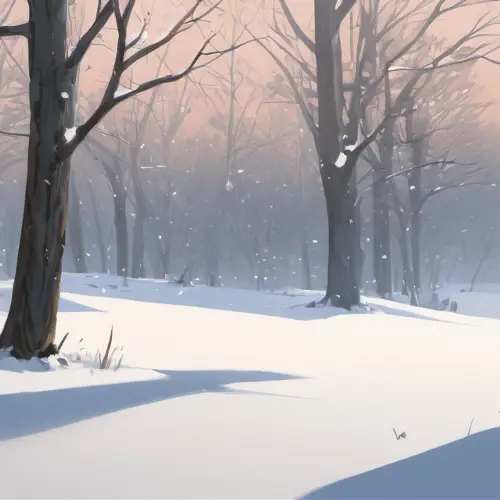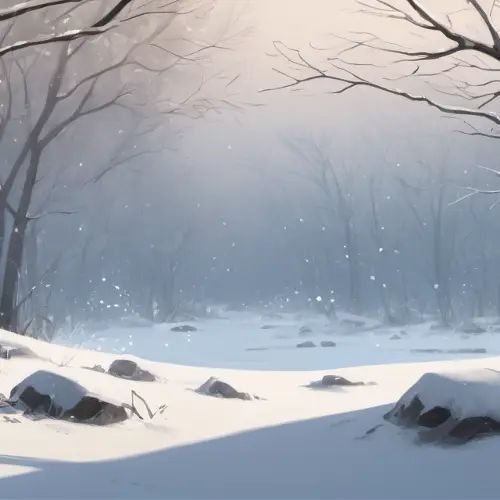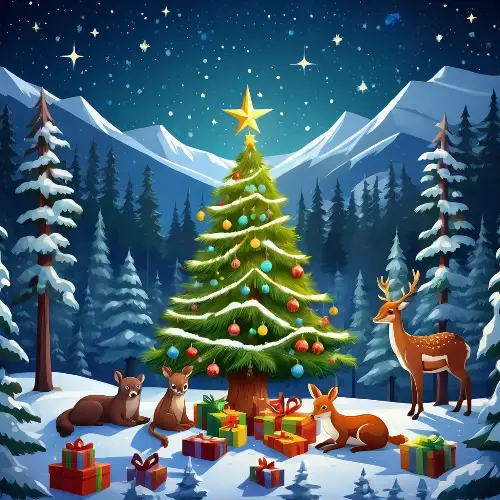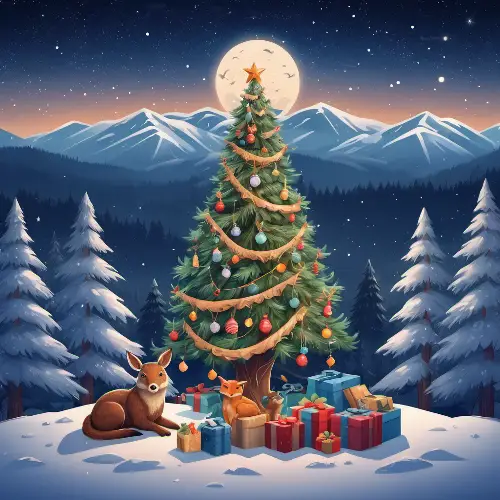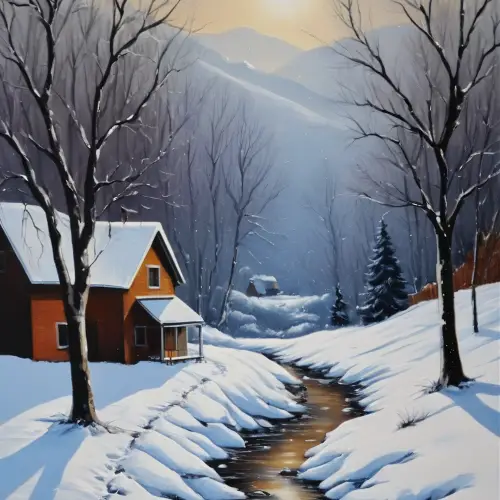Winter, fairy tales, dogs, cats. Animals playing in the snow, cute style
Snow, Snowman, Polar Bear, Penguin, Deer, Snowy Mountain, Skating, Snowy Battle
Snow, Snowman, Polar Bear, Penguin, Deer, Snowy Mountain, Skating, Snowy Battle,Single element
A majestic and divine scene featuring an entity god made of ice and snow. The focus is on the glacial deity, with a crystalline form emanating elemental power. The scene includes a frozen landscape, accentuating the god's connection to the icy elements. Vivid colors enhance the ethereal atmosphere, creating a sense of awe and reverence for this extraordinary creation of ice and snow
A majestic and divine scene featuring an entity god made of ice and snow. The focus is on the glacial deity, with a crystalline form emanating elemental power. The scene includes a frozen landscape, accentuating the god's connection to the icy elements. Vivid colors enhance the ethereal atmosphere, creating a sense of awe and reverence for this extraordinary creation of ice and snow
To create a visual representation of a \"winter forest,\" we'll consider conveying the essence of a forest during the wintertime. This entails depicting elements such as bare trees, snow, cool color tones, and perhaps wildlife or signs of life that are commonly associated with a forest in the winter season. Here's how you can create this visual representation: Overall Layout: Decide on the perspective of your visual – it could be a landscape view, a close-up of a part of the forest, or an abstract representation. Sketch or outline the basic shapes and areas where you will place the main elements such as trees, snowdrifts, and the sky. Trees: Draw or use images of trees with bare branches to represent deciduous trees in their dormant state. For evergreen trees, indicate their shapes with fuller, triangular forms to contrast with the bare branches. Use white or light gray to add touches of snow on the branches. Snow: Depict snow on the ground with curving lines to represent undulating snowdrifts. Use a bright white or slightly blue-tinted white for the snow to convey chilliness. Consider adding subtle shadows to the snow to create depth, using light blue or gray. Color Palette: Utilize cool tones such as blues, whites, and grays to convey the cold temperature. If there's a sunrise or sunset, you may introduce warmer hues like pink or orange in the sky, but keep it subtle. Wildlife and Details: If you want to showcase life in the winter forest, consider adding animals such as deer, rabbits, or birds. You can also add finer details like animal tracks in the snow, icicles hanging from branches, or a frozen stream. Atmosphere: Create a sense of atmosphere by adding light fog or mist to illustrate cold winter air, using light grey or soft white washes. To depict a time of day, consider the position and color of light; soft morning light, the gray overcast of midday, or the golden hues of a setting sun. Finishing Touches: Review your visual to ensure a balanced composition, and add any final details or adjustments to enhance realism or abstraction, depending on your style. Consider adding a slight vignette effect or framing with tree branches at the edges to draw focus into the center of the scene.
To create a visual representation of a \"winter forest,\" we'll consider conveying the essence of a forest during the wintertime. This entails depicting elements such as bare trees, snow, cool color tones, and perhaps wildlife or signs of life that are commonly associated with a forest in the winter season. Here's how you can create this visual representation: Overall Layout: Decide on the perspective of your visual – it could be a landscape view, a close-up of a part of the forest, or an abstract representation. Sketch or outline the basic shapes and areas where you will place the main elements such as trees, snowdrifts, and the sky. Trees: Draw or use images of trees with bare branches to represent deciduous trees in their dormant state. For evergreen trees, indicate their shapes with fuller, triangular forms to contrast with the bare branches. Use white or light gray to add touches of snow on the branches. Snow: Depict snow on the ground with curving lines to represent undulating snowdrifts. Use a bright white or slightly blue-tinted white for the snow to convey chilliness. Consider adding subtle shadows to the snow to create depth, using light blue or gray. Color Palette: Utilize cool tones such as blues, whites, and grays to convey the cold temperature. If there's a sunrise or sunset, you may introduce warmer hues like pink or orange in the sky, but keep it subtle. Wildlife and Details: If you want to showcase life in the winter forest, consider adding animals such as deer, rabbits, or birds. You can also add finer details like animal tracks in the snow, icicles hanging from branches, or a frozen stream. Atmosphere: Create a sense of atmosphere by adding light fog or mist to illustrate cold winter air, using light grey or soft white washes. To depict a time of day, consider the position and color of light; soft morning light, the gray overcast of midday, or the golden hues of a setting sun. Finishing Touches: Review your visual to ensure a balanced composition, and add any final details or adjustments to enhance realism or abstraction, depending on your style. Consider adding a slight vignette effect or framing with tree branches at the edges to draw focus into the center of the scene.
To create a visual representation of a \"winter forest,\" we'll consider conveying the essence of a forest during the wintertime. This entails depicting elements such as bare trees, snow, cool color tones, and perhaps wildlife or signs of life that are commonly associated with a forest in the winter season. Here's how you can create this visual representation: Overall Layout: Decide on the perspective of your visual – it could be a landscape view, a close-up of a part of the forest, or an abstract representation. Sketch or outline the basic shapes and areas where you will place the main elements such as trees, snowdrifts, and the sky. Trees: Draw or use images of trees with bare branches to represent deciduous trees in their dormant state. For evergreen trees, indicate their shapes with fuller, triangular forms to contrast with the bare branches. Use white or light gray to add touches of snow on the branches. Snow: Depict snow on the ground with curving lines to represent undulating snowdrifts. Use a bright white or slightly blue-tinted white for the snow to convey chilliness. Consider adding subtle shadows to the snow to create depth, using light blue or gray. Color Palette: Utilize cool tones such as blues, whites, and grays to convey the cold temperature. If there's a sunrise or sunset, you may introduce warmer hues like pink or orange in the sky, but keep it subtle. Wildlife and Details: If you want to showcase life in the winter forest, consider adding animals such as deer, rabbits, or birds. You can also add finer details like animal tracks in the snow, icicles hanging from branches, or a frozen stream. Atmosphere: Create a sense of atmosphere by adding light fog or mist to illustrate cold winter air, using light grey or soft white washes. To depict a time of day, consider the position and color of light; soft morning light, the gray overcast of midday, or the golden hues of a setting sun. Finishing Touches: Review your visual to ensure a balanced composition, and add any final details or adjustments to enhance realism or abstraction, depending on your style. Consider adding a slight vignette effect or framing with tree branches at the edges to draw focus into the center of the scene.
To create a visual representation of a \"winter forest,\" we'll consider conveying the essence of a forest during the wintertime. This entails depicting elements such as bare trees, snow, cool color tones, and perhaps wildlife or signs of life that are commonly associated with a forest in the winter season. Here's how you can create this visual representation: Overall Layout: Decide on the perspective of your visual – it could be a landscape view, a close-up of a part of the forest, or an abstract representation. Sketch or outline the basic shapes and areas where you will place the main elements such as trees, snowdrifts, and the sky. Trees: Draw or use images of trees with bare branches to represent deciduous trees in their dormant state. For evergreen trees, indicate their shapes with fuller, triangular forms to contrast with the bare branches. Use white or light gray to add touches of snow on the branches. Snow: Depict snow on the ground with curving lines to represent undulating snowdrifts. Use a bright white or slightly blue-tinted white for the snow to convey chilliness. Consider adding subtle shadows to the snow to create depth, using light blue or gray. Color Palette: Utilize cool tones such as blues, whites, and grays to convey the cold temperature. If there's a sunrise or sunset, you may introduce warmer hues like pink or orange in the sky, but keep it subtle. Wildlife and Details: If you want to showcase life in the winter forest, consider adding animals such as deer, rabbits, or birds. You can also add finer details like animal tracks in the snow, icicles hanging from branches, or a frozen stream. Atmosphere: Create a sense of atmosphere by adding light fog or mist to illustrate cold winter air, using light grey or soft white washes. To depict a time of day, consider the position and color of light; soft morning light, the gray overcast of midday, or the golden hues of a setting sun. Finishing Touches: Review your visual to ensure a balanced composition, and add any final details or adjustments to enhance realism or abstraction, depending on your style. Consider adding a slight vignette effect or framing with tree branches at the edges to draw focus into the center of the scene. To bring this visualization to life, you can use various mediums such as drawing by hand, digital illustration, or even arranging a collage with mixed materials. Consider also the context in which this visual will be used, as that might dictate the level of detail and stylization you apply to your representation of the winter forest.
To create a visual representation of a \"winter forest,\" we'll consider conveying the essence of a forest during the wintertime. This entails depicting elements such as bare trees, snow, cool color tones, and perhaps wildlife or signs of life that are commonly associated with a forest in the winter season. Here's how you can create this visual representation: Overall Layout: Decide on the perspective of your visual – it could be a landscape view, a close-up of a part of the forest, or an abstract representation. Sketch or outline the basic shapes and areas where you will place the main elements such as trees, snowdrifts, and the sky. Trees: Draw or use images of trees with bare branches to represent deciduous trees in their dormant state. For evergreen trees, indicate their shapes with fuller, triangular forms to contrast with the bare branches. Use white or light gray to add touches of snow on the branches. Snow: Depict snow on the ground with curving lines to represent undulating snowdrifts. Use a bright white or slightly blue-tinted white for the snow to convey chilliness. Consider adding subtle shadows to the snow to create depth, using light blue or gray. Color Palette: Utilize cool tones such as blues, whites, and grays to convey the cold temperature. If there's a sunrise or sunset, you may introduce warmer hues like pink or orange in the sky, but keep it subtle. Wildlife and Details: If you want to showcase life in the winter forest, consider adding animals such as deer, rabbits, or birds. You can also add finer details like animal tracks in the snow, icicles hanging from branches, or a frozen stream. Atmosphere: Create a sense of atmosphere by adding light fog or mist to illustrate cold winter air, using light grey or soft white washes. To depict a time of day, consider the position and color of light; soft morning light, the gray overcast of midday, or the golden hues of a setting sun. Finishing Touches: Review your visual to ensure a balanced composition, and add any final details or adjustments to enhance realism or abstraction, depending on your style. Consider adding a slight vignette effect or framing with tree branches at the edges to draw focus into the center of the scene.
Winter, decorated Christmas tree in the center of the frame, presents under the tree, forest animals resting next to the tree, mountains and forest in the background, starry sky in the background
